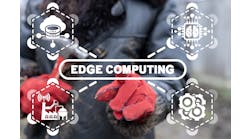Next month, Stratus Technologies serves as presenting sponsor of the fourth-annual Smart Industry Conference. Today, Stratus CEO Dave Laurello shares his thoughts on the complexity of edge applications, edge-strategy development and the new view of machine failure. Take a look…
Smart Industry: How is the concept of machine failure changing in this era of digital transformation?
Dave: Machine failure (or downtime) is not an option in today’s digital world. Not only can failure interrupt production and cause revenue loss, but there is now the added layer of data loss to consider. When the data you generate is your most important asset, you cannot risk it being interrupted, lost or compromised. With this increasing dependence on data, fault-tolerant availability is key so that you are able to protect your valuable information. It becomes especially important to invest in technologies with these capabilities as a part of your edge-computing strategy, since the edge is usually utilized in remote environments where there is limited/no staff available to help fix a problem if something were to fail.
Smart Industry: Are edge applications as complex as some people think?
Dave: Many industrial companies envisioning an IIoT and edge-enabled future are still dependent on their legacy infrastructure and, therefore, think making the transition to a more digitized enterprise that allows for edge will be complicated. This hurdle comes from the hesitation to rip-and-replace existing production systems, since most think this task of converting years and years of data to new infrastructures (along with the associated capital costs) will be overwhelming. But once manufacturers are able to embrace the fact that this approach will be a stepwise one, this transition becomes a lot less daunting.
The key to simplifying the approach to edge is through implementing simple edge infrastructure. This may sound redundant, but leveraging edge technologies that are easy to deploy, can be remotely managed and offer continuous availability are key. This is because, in addition to real-time decision-making capabilities, it allows companies to act quickly and keep mission-critical applications up and running.
Also, with a lack of IT staff in edge locations and OT professionals being the ones to manage equipment, systems should be pre-configured and self-maintaining, with automated IT administrative tasks happening in the background. Technologies that are autonomous are a must, as we see an increase in zero-touch environments with no people there are all.
Smart Industry: How does an enterprise create a future-proof edge-computing strategy?
Dave: Simply put, the key components of an edge-computing strategy are technology infrastructures that collect, analyze and store data on-site at production facilities. This helps to maintain operations, optimize performance, increase uptime and reduce latency, rather than relying on the systems of storing all data in the cloud.
The next wave of data communication between devices and networks will be fog computing. Fog is a form of cloud computing that is located closer to the edge. It can handle larger amounts of data without pushing the data out to the cloud. Fog’s main purpose will come into play outside of current industrial-automation and edge networks, as it will be an integral component of larger connected systems, like smart cities, that will share data between thousands or millions of connected devices. This level of integration is still years away, but understanding and implementing both edge and fog computing will be an important way to successfully future-proof your IIoT and edge strategy.




